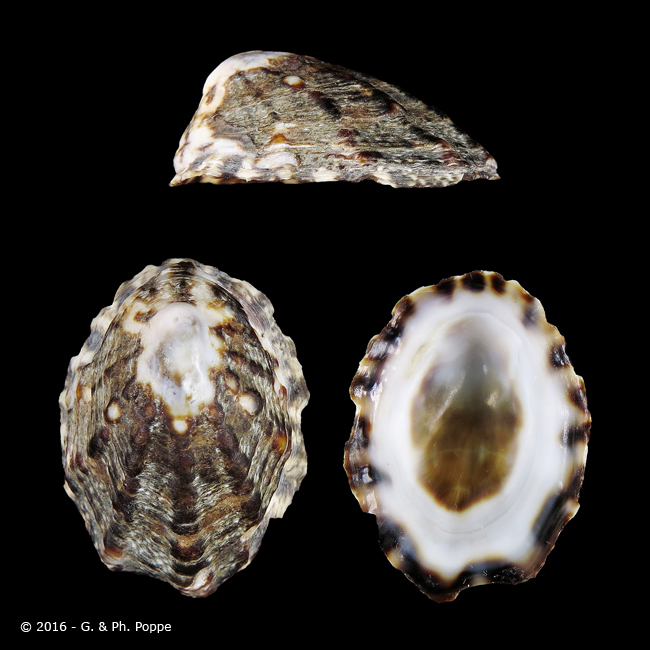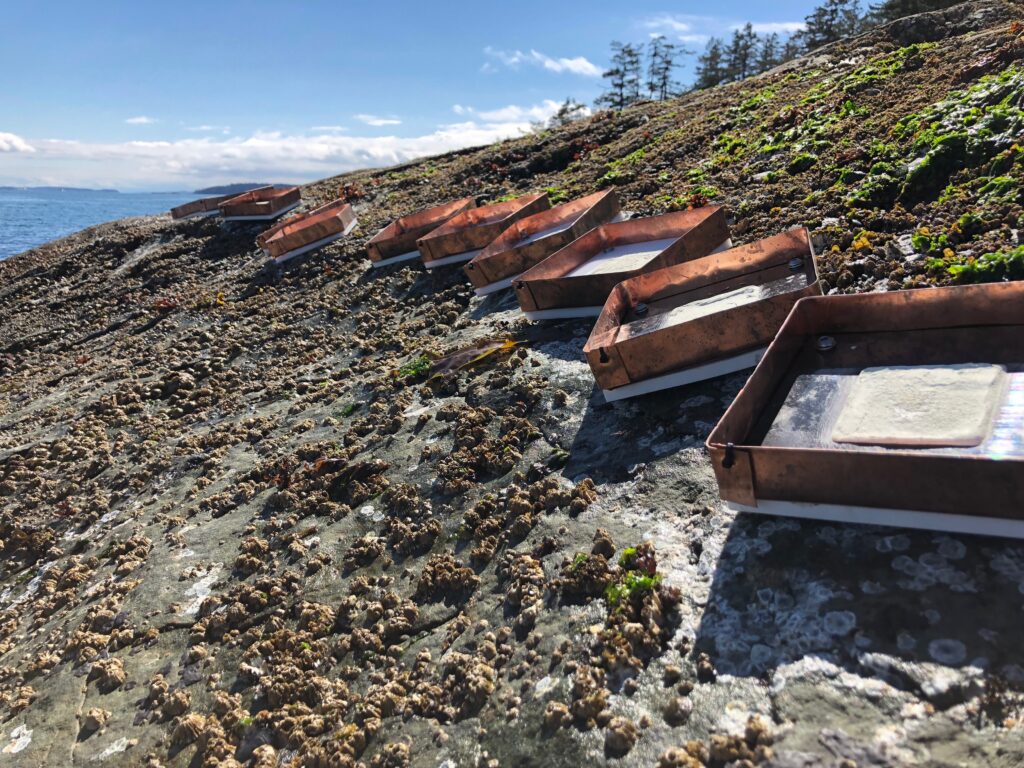Intertidal herbivores and hotter summers
The intertidal zone (the area of land between the low tide and high tide mark on the beach) is a very diverse place here in BC. We have many species of seaweeds such as rockweed, sea lettuce, and kelps, and invertebrates such as barnacles, mussels, and snails. One thing that contributes to diversity that might seem counter-intuitive are what we call “top-down” processes. These processes are often consumptive ones, whether a carnivore eating its prey or an herbivore chomping away on its preferred plant. Eating something may seem to be a process that reduces diversity – after all, you’re taking away something from the biological community. While this may temporarily reduce the amount of animal or plant matter in an area, it actually frees up space for other things to thrive. In the intertidal zone especially, space is limiting for most organisms. Things like seaweeds and barnacles need attachment surface to survive, and things that need seaweeds and barnacles to survive thus indirectly benefit from free space. Thus, consumptive processes like grazing by snails can actually increase diversity.
Further, the diversity and density of consumers can influence resultant patterns of diversity. Having way too many consumers can wipe out everything in the area if they’re not picky eaters, while having too few will result in one species that is especially good at taking up space dominating the area, thereby reducing diversity. Think of this as a Goldilocks scenario. Having greater consumer diversity means that each consumer has slightly different preferences for different prey or food types, so you get a more even community. Think of this as a potluck – not all attendees will be equally passionate about potato salad, and a part of the potato salad is likely to survive many different people’s eating given that they will have different food preferences.
The process that I’m most interested in is grazing, particularly by limpets and snails in the intertidal zone. I want to know how grazer diversity changes the resulting diversity of the overall community of barnacles, seaweeds, and tiny worms and amphipods that call this place home. In addition, I’m interested in climate change. Climate change has been consistently linked to an overall increase in ocean and air temperatures over time, so it’s important as ecologists to consider how processes like grazing will change as temperature increases.

All of this culminated in a project I’m running this summer, which has been funded by the National Geographic Society. I’m taking plastic black and white tiles, fencing them with copper sheet, and bolting them in the intertidal zone on Saltspring Island, southern British Columbia, Canada, which is known for its hot summers. Black tiles heat up more than white tiles at low tide because they absorb more solar energy, which means that I can use these to simulate the increased air temperatures expected under climate change. The copper fences are there to keep herbivores on my tiles, and unwanted herbivores off of my tiles since copper takes gross to snails. This means that I can change the composition of herbivore communities on my tiles to get at the question of how grazer diversity influences the overall diversity of animals and seaweeds that can survive there.

I think an interesting result of this experiment would be if more diverse communities of herbivores can resist temperature increases – that is, if these communities of plants and animals look the same at normal temperatures on white tiles as at higher temperatures on black tiles. This result could suggest that conserving biodiversity will become even more crucial as climate change intensifies